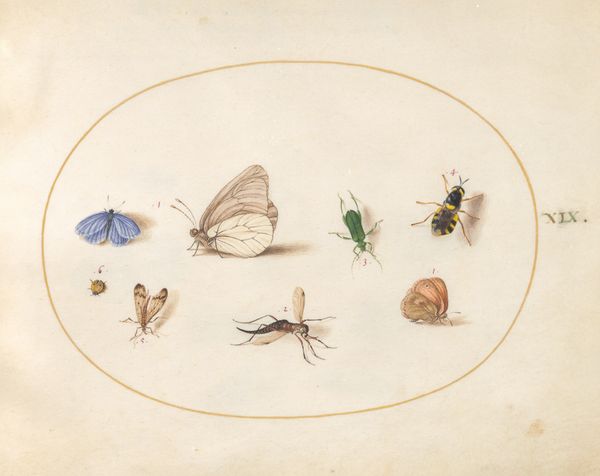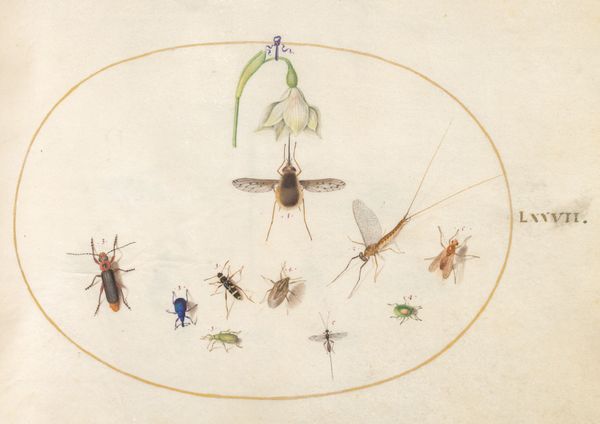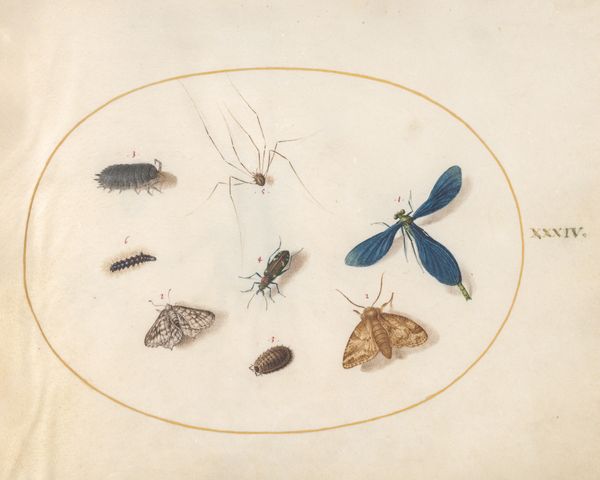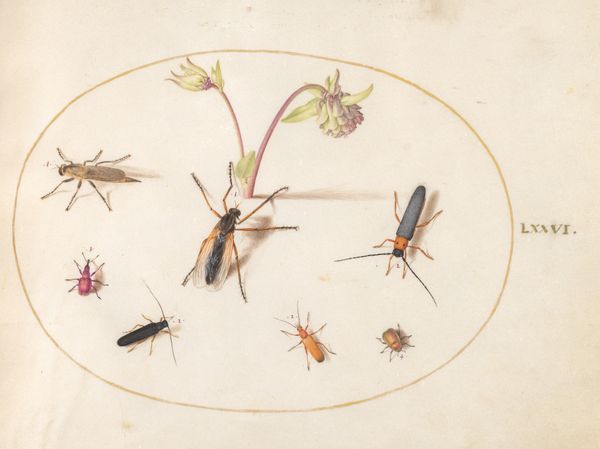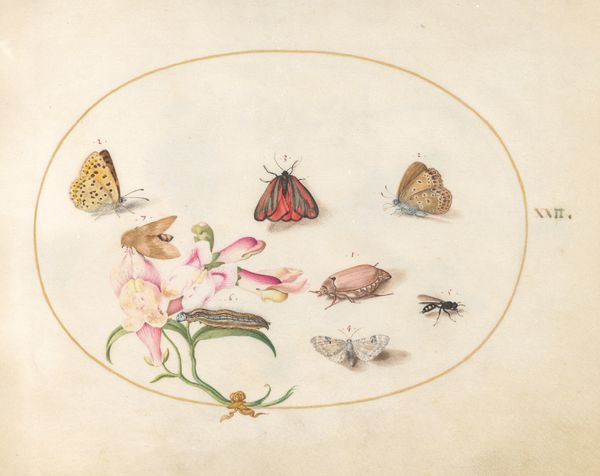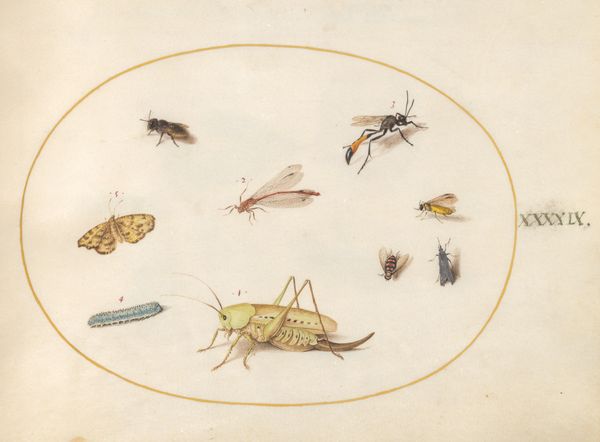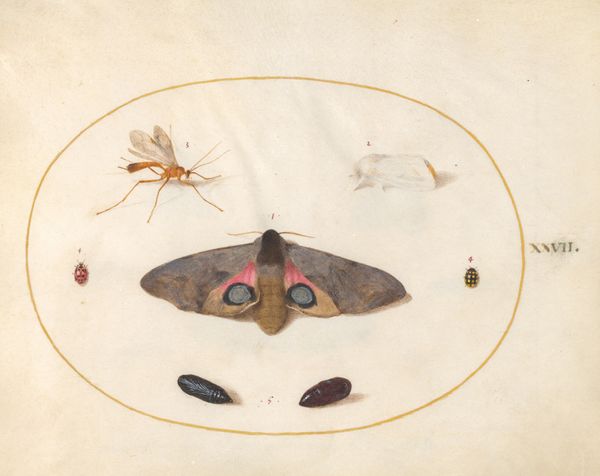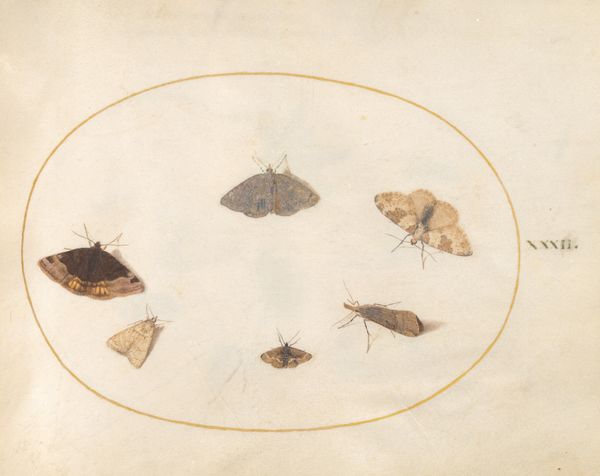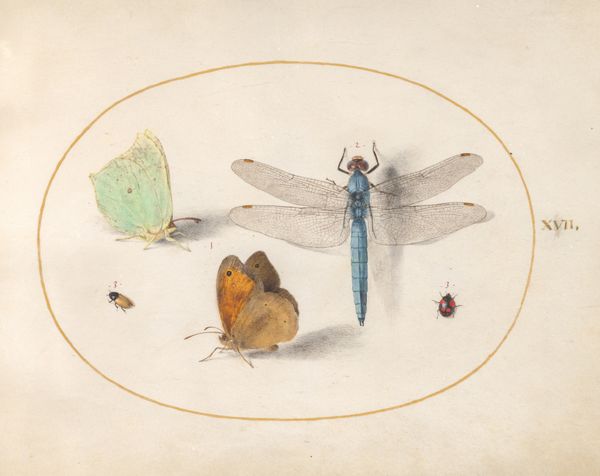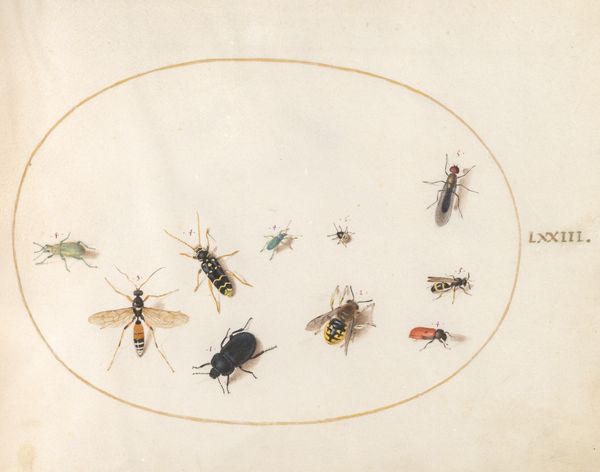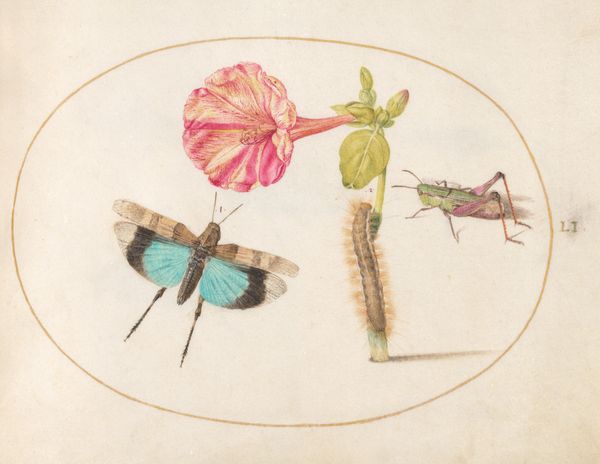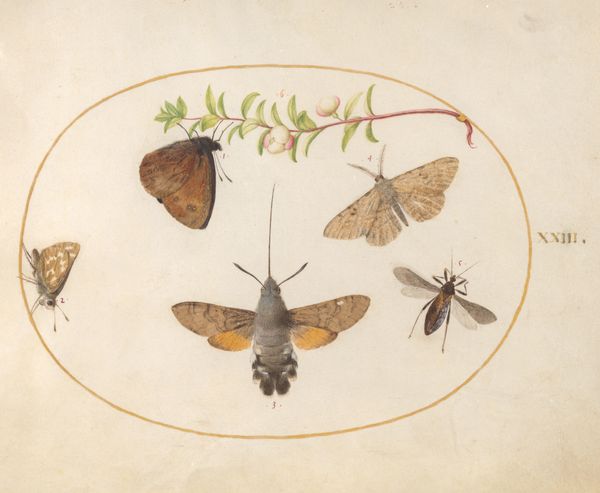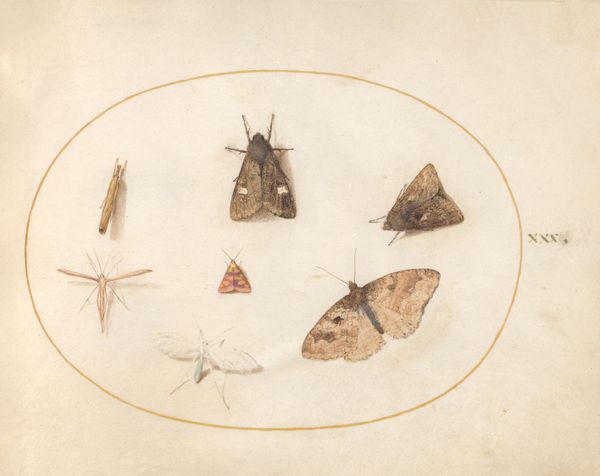
Plate 33: Moth and Butterfly with other Insects and a Columbine Flower c. 1575 - 1580
0:00
0:00
drawing, painting, watercolor
#
drawing
#
painting
#
watercolor
#
coloured pencil
#
watercolour illustration
#
northern-renaissance
#
watercolor
Dimensions: page size (approximate): 14.3 x 18.4 cm (5 5/8 x 7 1/4 in.)
Copyright: National Gallery of Art: CC0 1.0
Curator: Joris Hoefnagel's "Plate 33: Moth and Butterfly with other Insects and a Columbine Flower," dating back to around 1575-1580, offers us a fascinating glimpse into the Northern Renaissance through watercolor. Editor: The immediate impression is one of meticulous detail, almost scientific in its rendering. There's also a certain... preciousness, a miniature world contained within that golden border. Curator: Precisely! The work is an important contribution to understanding the cultural obsession with natural history during the late 16th century, a period of intense exploration and cataloging. Consider how his illustrations would be consumed and what types of beliefs about nature were reproduced at this time. Editor: It makes you wonder about the conditions of production. The creation of pigments, the laborious application, and who did this for, who could afford the cost of materials and the time invested. This isn't merely about depicting insects; it's a reflection of the burgeoning market in natural specimens and illustrated books for wealthy patrons. Curator: Absolutely. And what does it tell us about our evolving understanding of the natural world when these creatures, devoid of their natural settings, become isolated spectacles divorced from any larger environmental ecology or concern for labor extraction? How do the forms of control exerted on those labor forces also play a part in producing ways of knowing and classifying the natural world? Editor: And speaking of labor, look at the precision of those watercolour details. There’s such deliberate craftsmanship. These aren’t quickly dashed off sketches, it is almost compulsive how finely rendered each specimen is. The columbine's colors pop so beautifully among the insects. It speaks to me of dedicated expertise of skilled makers. Curator: Exactly. By the late sixteenth-century, naturalism became very popular. His precise and vibrant approach in watercolor is interesting. This signals a pivotal point for me when considering how the scientific method was gaining momentum, how that can impact cultural expressions about nature, and what social roles can be taken to produce that kind of art. Editor: The painting beautifully weaves craft, context, and social implications and, by extension, connects it all with nature. A complex set of details for something contained by one golden ring. Curator: Agreed. I'm now wondering what further contemporary insights this piece of art offers us with intersectional theories to engage in conversations regarding contemporary identity, class and society.
Comments
No comments
Be the first to comment and join the conversation on the ultimate creative platform.
